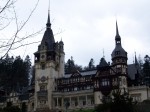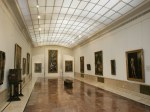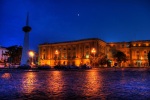
I first arrived in Bucharest’s Otopeni Airport on a cold, wet Tuesday evening back in February 2008 for a 3 day whistle stop tour.
I’d no preconceptions about Romania; the only memory I had was watching the revolution of 1989 on the television. That said I did have questions.
Like visitors the world over I succumbed to the fatal flaw of trying to absorb too much in too short a space of time. I found myself 3 days later leaving with more questions than answers but an inquisitiveness that has brought me back many times since.
I guess what strikes you first is that it is a country in transition; a country proud of its heritage, recovering from its communist past, coming to terms with its revolutionary rebirth and its emergence as a new member of the European Union.
If you are observant you will see this contrast everywhere, in the architecture, in the place names, in the way business is conducted but most of all you will see it in the people.
True, Bucharest and Romania in general is a cheap place to visit. Accommodation, food, drink and entertainment are likely all cheaper than the city you’ve just left but try to remember that compared to Romanian salaries the cost of living is no better than what you experience at home.
As a tourist your biggest problem is that there are so many places to visit but so little time to see them. In a country rich in tradition and folklore there are an abundance of great places outside of Bucharest as yet unspoiled by an influx of foreign visitors. There’s no real need to go renting a car because the train service is very efficient. Ironically finding places in Bucharest is a little harder; it’s not that they don’t exist but don’t expect to find them in the Bucharest tour guide, they just aren’t there. The internet or just walking the city are your best sources.
As you travel the country you’ll meet Romania’s secret natural resource – it’s people. Once you break through the language barrier and their slightly reserved nature you’ll find a friendly people, interesting and helpful.
What you’ll also notice is the emergance of a middle class within Romania; a youthful Romania of highly educated, professional, eager individuals .
The days of Romania as a communist country on the periphery of Europe are long gone. It is a changing nation, an emerging nation. Watch this space because Romania is changing fast ……………..







